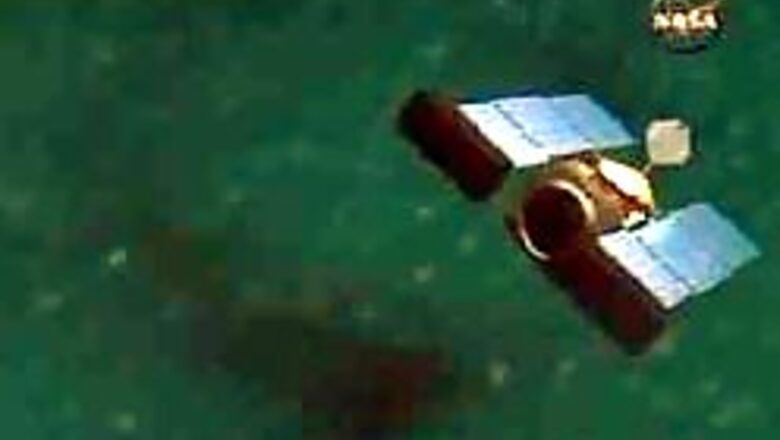
views
New Delhi: Imagine a space capsule bringing back dust that could give clues on the origin of the solar system.
NASA's Stardust space probe is racing towards Earth, carrying a tiny payload of cometary and interstellar dust particles that scientists believe are leftovers from the creation of our solar system.
The Stardust spacecraft was launched seven years ago. It has flown nearly 5 billion km since then, going half way to Jupiter.
On Sunday, it will pass by the earth and drop a 100-pound capsule loaded with comet dust. The capsule will parachute to earth once it enters the atmosphere.
"We’ve been testing and training in Utah for hardlandings where we might even breach the return capsule. All of these possible contingencies which are of low probability we’ve actualy tested and trained for," a Nasa scientist said.
Scientists say that it is the first time since 1972 that any extraterrestrial solid material and comic particles has been collected and brought back to Earth.
The highlight of the mission came on January 2, 2004, when Stardust flew within 240 kilometers of the comet Wild 2.
It is expected that the descent of the Stardust capsule will be visible in northern California, Oregon and Nevada. During its descent to the Utah desert ... it will deploy two parachutes, though NASA officials said they have prepared for the possibility of a hard landing.
The landing
Once Stardust ejects the capsule, there will be no turning back. Brownlee said the capsule would spin towards Earth on a ballistic trajectory with no power and no controls.
The capsule will enter the atmosphere over the Pacific Ocean, traveling at a speed of nearly 29,000 miles per hour.
At 105,000 feet, a small parachute will deploy to begin to slow the craft, and at 10,000 feet the main parachute will open to bring it in for a soft landing at the Air Force's Utah Test and Training Range southwest of Salt Lake City.
The training range is a little bit bigger than the state of Delaware.
PAGE_BREAK
"This is the fastest return vehicle that has ever been brought back to Earth," said Mission Systems Manager Ed Hirst. "So bringing it home for the first time is the only way to test a system like this. You do testing on the ground to the extent you can so there is some residual risk that something could happen on return. We think the probability of that is very low at this point."
NASA's last sample return mission did not go as planned. In 2004, the parachutes on the Genesis spacecraft didn't open, and it crashed into the ground at full speed. Stardust mission managers say they're confident that won't happen this time.
Three helicopters will be waiting outside of the 27-by-47-mile (44-by-76-kilometer) landing zone to recover the capsule within 10 minutes of the touchdown, NASA says. If bad weather grounds the helicopters, the search will be conducted in ground vehicles.
Once the capsule is found, it will be transported to a "clean room" at the nearby Dugway Proving Grounds, where it will be opened and the canister containing the samples will be removed.
Eventually, the canister will be moved to a special repository at NASA's Johnson Space Center in Houston, where the samples will be housed on a long-term basis.
Fast results, long-term study
Scientists expect to find a little less than a thimble-full of material in the aerogel.
"The biggest particles that hit the collector should be quite large, should be somewhere pushing a millimeter in size, which may have gone all the way through the collector," Brownlee said.
"So anyway, these small particles, if they do not fragment, they produce long carrot-shaped tracks in the aerogel and you can see those."
He said that those tracks should be visible to the naked eye.
Brownlee said scientists would have some results, such as the number of particles recovered, within days and more detailed findings within weeks.
"We'll be able to say some things almost instantly. One of the big questions is do comets contain minerals that contain water, called hydrated silicates and under an electron microscope you can identify those practically instantly," Brownlee said.
But he said it would take years to fully study the samples.
Brownlee likened the process to the ongoing study of rocks brought back from the moon.
"The last Apollo mission was 1972. And people are still discovering very exciting things on the Apollo samples," he said. "Samples are a resource that are unending. And so unless we consume all the samples, they will certainly be studied decades from now."
He said that some of the procedures that will be used on the samples had not even been invented when the Stardust mission was proposed.
(With inputs from CNN.com)


















Comments
0 comment